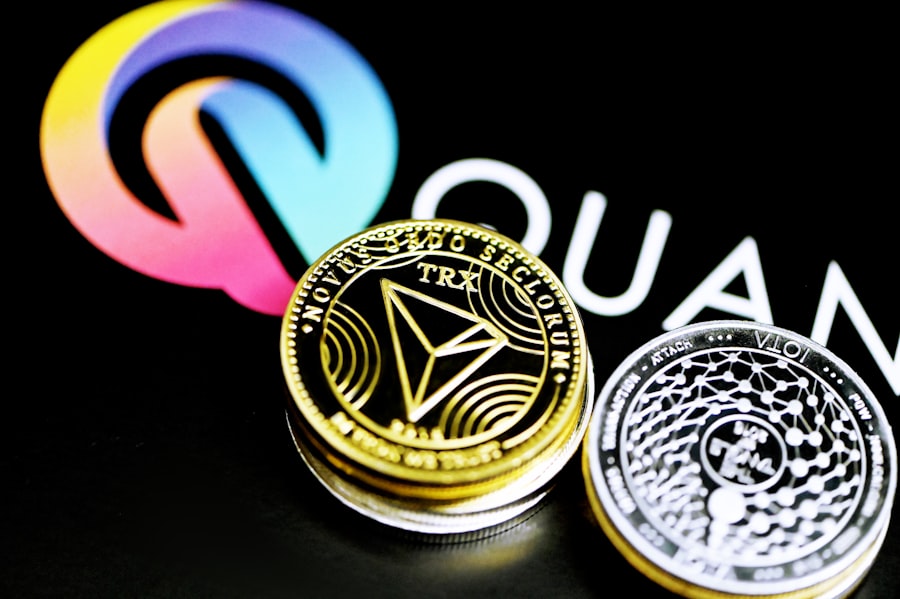In recent years, the digital landscape has undergone a significant transformation, particularly with the emergence of Bitcoin and private, decentralized social networks. Bitcoin, the pioneering cryptocurrency, has revolutionized the way we perceive and conduct financial transactions. It operates on a decentralized ledger known as blockchain, which ensures transparency and security without the need for intermediaries.
This innovation has not only disrupted traditional financial systems but has also paved the way for new forms of social interaction online. Simultaneously, the rise of private, decentralized social networks has emerged as a response to growing concerns over privacy and data security on mainstream platforms. These networks prioritize user control and data ownership, allowing individuals to connect without the pervasive surveillance and data mining practices that characterize many popular social media sites.
By integrating Bitcoin into these platforms, we can explore a new paradigm of social networking that emphasizes both financial autonomy and personal privacy.
Key Takeaways
- Bitcoin and private, decentralized social networks offer a new way for users to interact and transact without relying on centralized authorities.
- Using Bitcoin in private, decentralized social networks provides benefits such as lower transaction fees, increased privacy, and censorship resistance.
- However, challenges and risks of using Bitcoin in private, decentralized social networks include price volatility, security concerns, and potential regulatory issues.
- Examples of private, decentralized social networks that accept Bitcoin include Mastodon, Diaspora, and Steemit.
- Bitcoin enhances privacy and security in social networking by allowing users to have full control over their funds and data, without relying on third-party intermediaries.
The Benefits of Using Bitcoin in Private, Decentralized Social Networks
One of the most compelling advantages of using Bitcoin in private, decentralized social networks is the enhanced financial privacy it offers. Traditional social media platforms often monetize user data through targeted advertising and data sales, leaving users vulnerable to exploitation. In contrast, by utilizing Bitcoin for transactions within these networks, we can maintain a higher level of anonymity.
Our financial interactions become less traceable, allowing us to engage in commerce without compromising our personal information. Moreover, Bitcoin facilitates borderless transactions, which is particularly beneficial in decentralized social networks that aim to connect users globally. We can send and receive payments without the constraints imposed by traditional banking systems or currency exchange rates.
This opens up opportunities for creators and users alike to engage in microtransactions, tipping, or subscription models without incurring hefty fees or delays associated with conventional payment methods. The ability to transact freely fosters a more inclusive environment where everyone can participate regardless of their geographical location.
The Challenges and Risks of Using Bitcoin in Private, Decentralized Social Networks

Despite the numerous benefits, we must also acknowledge the challenges and risks associated with using Bitcoin in private, decentralized social networks. One significant concern is the volatility of Bitcoin’s value. The cryptocurrency market is notoriously unpredictable, with prices fluctuating dramatically over short periods.
This volatility can pose risks for users who rely on Bitcoin for transactions within these networks, as the value of their holdings may change significantly between the time they earn or receive Bitcoin and when they choose to spend it. Additionally, the technical complexity of using Bitcoin can be a barrier for some users. While many of us are becoming more familiar with cryptocurrencies, there remains a learning curve associated with wallets, private keys, and transaction processes.
For those who are not tech-savvy, navigating this landscape can be daunting. Furthermore, the potential for scams and fraud in the cryptocurrency space adds another layer of risk that we must be vigilant about as we engage with these decentralized platforms.
Examples of Private, Decentralized Social Networks that Accept Bitcoin
Several private, decentralized social networks have emerged that accept Bitcoin as a form of payment or donation. One notable example is Mastodon, an open-source platform that allows users to create their own communities while maintaining control over their data. Some instances of Mastodon have integrated Bitcoin payment options for creators who wish to monetize their content or receive donations from supporters.
Another example is Diaspora*, a decentralized social network that emphasizes user privacy and data ownership. Diaspora* allows users to connect through independently operated pods while maintaining control over their personal information. Some pods have begun accepting Bitcoin donations to support their operations and development efforts.
These platforms exemplify how Bitcoin can be seamlessly integrated into decentralized social networking environments, providing users with both financial autonomy and enhanced privacy.
How Bitcoin Enhances Privacy and Security in Social Networking
The integration of Bitcoin into private, decentralized social networks significantly enhances both privacy and security for users. By utilizing blockchain technology, transactions made with Bitcoin are recorded on a public ledger that is immutable and transparent. This means that while our identities remain pseudonymous, the integrity of our transactions is preserved.
We can engage in financial exchanges without revealing sensitive personal information that could be exploited by malicious actors. Furthermore, the decentralized nature of these networks means that there is no central authority controlling user data or transactions. This reduces the risk of data breaches and unauthorized access to our information.
In contrast to traditional social media platforms where user data is often stored in centralized databases vulnerable to hacking, decentralized networks distribute data across multiple nodes. This architecture enhances security and ensures that our interactions remain private and protected from prying eyes.
The Future of Bitcoin in Private, Decentralized Social Networks

As we look ahead, the future of Bitcoin in private, decentralized social networks appears promising. With increasing awareness of privacy issues and data security concerns among users, we anticipate a growing demand for platforms that prioritize these values. As more individuals seek alternatives to mainstream social media, the integration of Bitcoin could become a standard feature in these networks.
Moreover, advancements in technology may further streamline the use of Bitcoin within decentralized social networks. As user interfaces become more intuitive and educational resources improve, we can expect a broader demographic to engage with cryptocurrencies confidently. This could lead to an ecosystem where financial transactions are seamlessly integrated into our social interactions, fostering a new era of digital communication that values privacy and autonomy.
Tips for Safely Using Bitcoin in Private, Decentralized Social Networks
To navigate the world of Bitcoin safely within private, decentralized social networks, we should adopt several best practices. First and foremost, it is crucial to use secure wallets for storing our Bitcoin. Hardware wallets are often recommended due to their enhanced security features compared to software wallets or exchanges.
By keeping our private keys offline, we reduce the risk of theft or hacking. Additionally, we should remain vigilant against scams and phishing attempts that target cryptocurrency users. It is essential to verify the legitimacy of any platform or individual before engaging in transactions or sharing personal information.
Educating ourselves about common scams can help us avoid falling victim to fraudulent schemes that could jeopardize our assets.
The Potential Impact of Bitcoin on the Future of Social Networking
In conclusion, the intersection of Bitcoin and private, decentralized social networks holds immense potential for reshaping our online interactions. By prioritizing privacy and financial autonomy, these platforms offer an alternative to traditional social media that aligns with our growing concerns about data security. While challenges remain—such as volatility and technical barriers—the benefits of using Bitcoin in these environments are compelling.
As we continue to explore this evolving landscape, it is clear that Bitcoin can play a pivotal role in enhancing our online experiences while safeguarding our personal information. The future of social networking may very well be defined by our ability to leverage cryptocurrencies like Bitcoin to create spaces that respect our privacy and empower us as users. As we embrace this new paradigm, we stand at the forefront of a digital revolution that could redefine how we connect and interact in an increasingly interconnected world.
In a recent article on NFT Newsletter, the discussion around the use of Bitcoin in private, decentralized social networks is further explored. The article delves into the potential benefits and challenges of incorporating Bitcoin into these networks, highlighting the importance of privacy and security in the digital age. Additionally, the piece touches on the growing interest in blockchain technology and its potential impact on social networking platforms. For more insights on cryptocurrency and blockchain technology, be sure to check out the latest articles on NFT Newsletter.
FAQs
What is Bitcoin?
Bitcoin is a decentralized digital currency, without a central bank or single administrator, that can be sent from user to user on the peer-to-peer bitcoin network without the need for intermediaries.
What are private, decentralized social networks?
Private, decentralized social networks are social media platforms that are built on decentralized technologies, meaning that they are not controlled by a single entity or company. These networks prioritize user privacy and data ownership.
How is Bitcoin used in private, decentralized social networks?
Bitcoin can be used in private, decentralized social networks as a means of incentivizing users to contribute to the network, rewarding content creators, and facilitating peer-to-peer transactions within the network.
What are the benefits of using Bitcoin in private, decentralized social networks?
Using Bitcoin in private, decentralized social networks can provide increased privacy, security, and control over personal data for users. It can also enable direct, peer-to-peer transactions without the need for intermediaries.
Are there any challenges or limitations to using Bitcoin in private, decentralized social networks?
Challenges and limitations to using Bitcoin in private, decentralized social networks may include scalability issues, user adoption barriers, and regulatory concerns. Additionally, the volatility of Bitcoin prices can impact its use as a means of exchange within the networks.
























